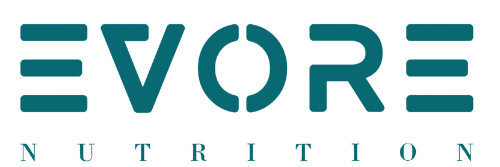How to Read and Understand Nutrition Labels
Are you tired of feeling confused about what’s really in the food you’re eating? Do nutrition labels seem like a foreign language to you? Don’t worry, you’re not alone. Understanding nutrition labels can be overwhelming, but it’s an important step in making informed choices about your health and diet. In this blog post, we’ll break down everything you need to know about reading and understanding nutrition labels so that you can confidently navigate the grocery store aisles and make healthier choices for yourself and your family. Let’s get started!
What is a Nutrition Label?
A nutrition label is a panel of information that details the nutritional value and ingredients of a particular food or beverage product. It’s typically found on the back or side of packaging and can be an important tool in making informed choices about what we eat.
A nutrition label aims to inform consumers about key information regarding the product’s nutrient content, such as calories, fat, protein, carbohydrates, vitamins, minerals and other ingredients. This information allows individuals to compare different products and make healthier choices based on their dietary needs.
Nutrition labels are regulated by the Food and Drug Administration (FDA) to ensure accuracy and consistency across all food products.
Food and Drug Administration (FDA) sets industry standards for labelling requirements. These standards ensure that all food manufacturers provide accurate and consistent information so consumers can trust what they read.
The information required on nutrition labels includes:
• Serving size
• Calories
• Total fat
• Saturated fat
• Trans fat
• Cholesterol
• Sodium
• Total carbohydrates
• Dietary fiber
• Sugars
• Protein
• Vitamins and minerals
• Ingredients list
Additional information may include vitamins, minerals, and other ingredients.
Understanding how to read a nutrition label gives us more control over our health by allowing us to make informed decisions about what we put into our bodies. With this knowledge, we can take charge of our diets confidently!
How to Read a Nutrition Label
Learning to read a nutrition label is essential for making informed food choices. Here are some simple steps to follow when reading a nutrition label:
1. Start with serving size: The serving size tells you the amount of food one serving contains, and all the nutritional information on the label is based on this amount.
2. Check calories: Calories provide energy to our body, so it’s important to know how many calories you consume per serving.
3. Look for macronutrients: Macronutrients include fats, carbohydrates, and proteins which play an important role in our diet. Make sure to check the amounts of each macronutrient present in one serving.
4. Pay attention to micronutrients: Micronutrients include vitamins and minerals, essential nutrients for maintaining good health.
5. Limit certain nutrients: Nutrients such as saturated fat, trans fat, sodium, and added sugars should be limited in your diet since they can increase your risk of chronic diseases like heart disease or diabetes.
6. Check for dietary fiber: Dietary fiber is an important nutrient that aids in digestion, and it’s recommended to consume 25-35 grams of fiber per day.
7. Read the ingredient list: The ingredient list will tell you what is actually in your food. Avoid foods with simple ingredients and foods with added sugar or processed grains.
Following these steps should help you make informed decisions about your food. Reading nutrition labels can be tricky, but it will become easier and help you make healthier choices with practice.
The Different Sections of a Nutrition Label
When you look at a nutrition label, you’ll notice that there are several sections to it. Each section provides valuable information about the food product you’re considering purchasing or consuming.
First, let’s take a look at the serving size section. This tells you how much of the product is considered one serving and gives measurements in volume (cups) and weight (grams). It’s important to pay attention to this to accurately calculate your intake based on how much you plan on eating.
Next up is the calories section. Here, you’ll find out how many calories are in each serving of the food item. Keep in mind that this number can vary greatly depending on how much of it you eat.
The next few sections provide information about different types of nutrients such as fat, cholesterol, sodium, carbohydrates, fibre, sugar and protein. These sections will let you know how much of each nutrient is contained within one serving.
There may be additional sections providing information about vitamins and minerals in the food item and any potential allergens or ingredients that could cause adverse reactions for some individuals like nuts or dairy products.
Understanding these different sections can help make informed decisions when shopping for groceries or deciding what to eat at mealtime.
Pros and Cons of Reading Nutrition Labels
There are both pros and cons to reading nutrition labels. Let’s start with the pros. Reading nutrition labels can help you make more informed decisions about your food. By understanding what is in your food, you can better manage your calorie intake and ensure you get all the necessary nutrients.
Another benefit of reading nutrition labels is that it can help you identify potential allergens or ingredients that you may want to avoid for personal reasons. For example, if you have a gluten intolerance, being able to scan a label for wheat or other gluten-containing ingredients quickly can be extremely helpful.
On the flip side, there are some cons to reading nutrition labels. Firstly, reading the labels on every item you buy can be time-consuming and tedious. Secondly, some nutrition label information may be confusing or difficult to interpret. Lastly, it is important to remember that the label often doesn’t reveal all of the details about a portion of food; for example, if an item is labelled “low-fat”, it doesn’t necessarily mean that it’s healthy or low in calories.
Overall, reading nutrition labels can be beneficial if done correctly. However, it is also important to remember that these labels are not foolproof and should not always be taken at face value.
On the other hand, reading nutrition labels also has some potential downsides. One possibility is that it could lead to an unhealthy obsession with counting calories or tracking every single nutrient in your diet.
Additionally, some people find it difficult or time-consuming to read and interpret nutrition labels accurately. This could lead them to make incorrect assumptions about the nutritional content of their food or simply give up on trying to understand it altogether.
While there are benefits and drawbacks associated with reading nutrition labels, it’s ultimately up to each person to decide whether this practice is right for them based on their unique needs and preferences.
Conclusion
Reading and understanding nutrition labels is essential for anyone who wants to maintain a healthy lifestyle. You can make informed decisions about what you eat and drink with the information provided on these labels. By paying attention to serving sizes, calories, nutrients, and ingredient lists, you can choose foods that support your health goals and avoid those that don’t.
Although there are some drawbacks to reading nutrition labels (such as the potential for confusion or misinterpretation), the benefits far outweigh any negatives. When used correctly, nutrition labels can be powerful tools in helping us achieve optimal health.
With this knowledge, you can confidently navigate the grocery store aisles and make healthier choices for yourself and your family. So the next time you pick up a food product, take a few minutes to read the nutrition label – it could be the first step towards making smarter decisions about your diet and health!
So next time you’re at the grocery store or choosing between menu items at a restaurant, take a moment to read and understand the nutrition label. Your body will thank you!



